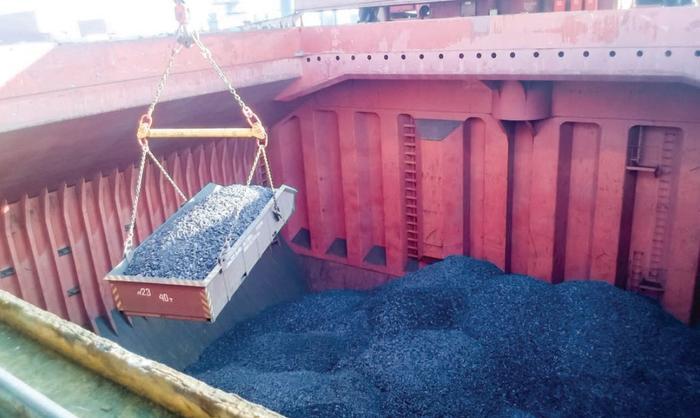Seaways Free Article: The silent killers on your ship
Two recent enclosed space incidents have many precedents in the industry - what can we learn from them (and are we learning it?)
by Capt Garry Hallett, InterManagerIn this article we look at two specific causal factors in enclosed space accidents on board ships, using multiple accidents stretching over many decades but unfortunately all with extremely current application.
Right tools for the job
0347 local time, Asia Pacific, 19 February 2025. Four crewmembers had been instructed to enter the cargo tank and squeegee the last of the remaining dregs of the cargo of coconut fatty acid distillate towards the bell mouth so it could be discharged ashore. To keep the cargo fluid, heating was continuously applied to the tank’s heating coils. On completion of the task, the four crew members began to exit the tank. Unfortunately, all four succumbed to carbon monoxide (CO) poisoning as they approached the upper level of the tank and died.
The accident has been investigated by the port authorities; it was found that high levels of carbon monoxide were released when the cargo was continuously heated over a period of time. Carbon monoxide is a by-product of incomplete combustion and can be emitted when certain cargoes are heated above their flow point.
In this incident, gas testing revealed that the CO content in the cargo tank top sides reached levels which renders the atmosphere unable to support human life. CO is lighter than air so will collect in the upper reaches of any space (as a side note; consider the placement of CO monitors in your own home). The concentration of CO was not expected, given that the safety data sheet [SDS] of the cargo does not state any hazard of CO emissions due to heating – although this is a known hazard. It seems the SDS does not provide sufficient guidance on the release of CO during heating. Some of those viewed say the product is safe, others make vague references to the fact that it may present a problem when heated.


Are the hazards clear?
This accident occurred in 2025. Some 24 years previously, a squad of six shore workers were hired to undertake sweeping duties discharging a cargo of Indonesian crude coconut oil on a ship in northern Europe. Within minutes of entering the tank and beginning operations, they began to feel dizzy. Four successfully exited the tank, but two collapsed over the heating coils, suffering serious burns, and one subsequently passing. A UK P&I Club bulletin at the time stated ‘The development of CO in a cargo tank with vegetable oil was unknown and even provoked the chemist to express initial disbelief. Analysis however, showed that CO was forming in samples that were being heated in the laboratory, to dangerously high (fatal) levels.’
A similar incident occurred two years later. On this occasion the ship’s Master and two crew members managed to exit the tank, but the subsequent port investigation determined that there had been no check for carbon monoxide during the pre-tank entry process. CO levels within the space subsequent to the accident were found to be around 3,000ppm.
In the interim between these two accidents, the UK’s Maritime and Coastguard Agency (MCA) released MGN 223, providing guidance on the carriage of coconut oil and other veg oils in cargo tanks. It states:
‘Carbon Monoxide is toxic by inhalation and can cause serious damage to health by prolonged exposure. Hence the 8 hour exposure limit for personnel to CO concentrations is 30 parts per million, though for short term exposure not exceeding 15 minutes, concentrations of up to 200 parts per million can be allowed.’
And further:
‘The MCA also recommends that the atmosphere of cargo spaces with such oils are continuously monitored during the discharge process for the presence of CO if it is essential for personnel to be within that space. The temperature of the cargo should also be monitored closely. This is particularly important during the closing stages of the cargo discharge operation.’
MGN 223 is an active guidance notice on the UK maritime and coastguard website.
For me these three incidents pose the following questions:
- Are we providing the correct tools for the seafarers on board ship to manage the risks presented to them by the cargos they are carrying?
- Do they have access to SDS that are accurate and capture the risks to those handling the products?
- Do they have the correct gas detection meters to identify specific gasses that are harmful to life?
- Do they have the background knowledge to enable hazard identification fully encompassing the risks of the activity?
- As an industry, are we learning from previous accidents, and are we using that information and knowledge to protect the next generation of seafarers?
Do you know what to do when it all goes wrong?
27 June 2023. The Berge Mawson was at anchor, loading coal at Bunyu Island, Indonesia. The bulk carrier had been in port since 19 June, and loading had been interrupted by heavy rain. There were many shore stevedores on board the ship assisting in the loading operation and the subsequent trimming of the cargo. The Berge Mawson had a total of 20 crew on board, undertaking all activities necessary to maintain the ship’s anchorage position, engine room duties, catering and deck operations, all in compliance with the company’s hours of work and rest requirements. A busy but not unusual situation in modern shipping.
No risk assessment had been conducted for or with the stevedores for the loading operation. At about 1300 local time a stevedore entered a cargo hold access trunk, and quickly collapsed on the access trunk landing. The ship’s deck watchman and two other crew ran to get help and to organise the rescue of the collapsed stevedore. Two other stevedores, seeing their friend collapsed on the access trunk landing and the crew members apparently running away, rushed in to the access trunking to rescue their friend. All three succumbed to a lack of oxygen and high hydrogen sulphide content and subsequently died.
The accident was comprehensively investigated by the UK marine accident investigation branch, MAIB. The full report was issued nearly three years later and uploaded to the Incident investigation module of GISI, the IMO database and released publicly.
[Editor’s note: a summary of this report will be included in the MARS reports for August.]
There have been many similar incidents, some of which were highlighted in the MAIB report, including the fatalities on board Iron Queen, Suntis, Saga Frontier and Eny. This unfortunately highlights the ongoing residual risks related to enclosed space entry and specifically to third parties; in these cases to stevedores.
While data collated by InterManager indicates that a single fatality is marginally the most probable outcome of an enclosed space incident (52% of cases), 30% of those cases involved injury to an additional person, or persons, who became involved in the rescue attempts. Of all recorded enclosed space accidents, 44% resulted in multiple casualties, some of whom were involved in the rescue of an initial single casualty, as was the case in the Berge Mawson.
Although not specifically highlighted in the Berge Mawson report, I was very aware when reading it of the ‘rescuer syndrome’ phenomenon, where people feel a compulsive urge to react instantly and instinctively. This is worthy of further consideration and understanding. It may explain why people act the way they do, and go some way to explaining the underlying urge to act and, as in the case of the Berge Mawson, result in more people losing their lives.
This phenomenon has been extensively researched and published on, particularly in the area of accidents to persons who get into difficulties when swimming adjacent to pleasure beaches. The research undertaken by Pearn and Franklin (2012) in their article ‘The Impulse to Rescue’ (International Journal of Aquatic Research and Education) is of particular relevance to observations in enclosed space accidents where multiple fatalities have occurred.
It would be most helpful to consider this in order to mitigate a natural reaction to help instantly. This would be particularly beneficial when considering how to reduce the casualty numbers per accident, rather than the frequency of accidents overall. Something for further consideration?
Further reading and actions
- The MAIB Berge Mawson report references the date and analysis gathered by InterManager on enclosed space accidents. See Seaways, December 2024, for more detailed analysis of these figures.
- InterManager has a confidential reporting system for enclosed space accidents. Send your e-mails to [email protected]
- Take part in InterManager’s survey asking why people continue to die in enclosed spaces here - have your say
A version of this article was first published in the HCMM Journal, June 2024 and appears here with thanks

Safety needs more than a sign
